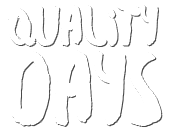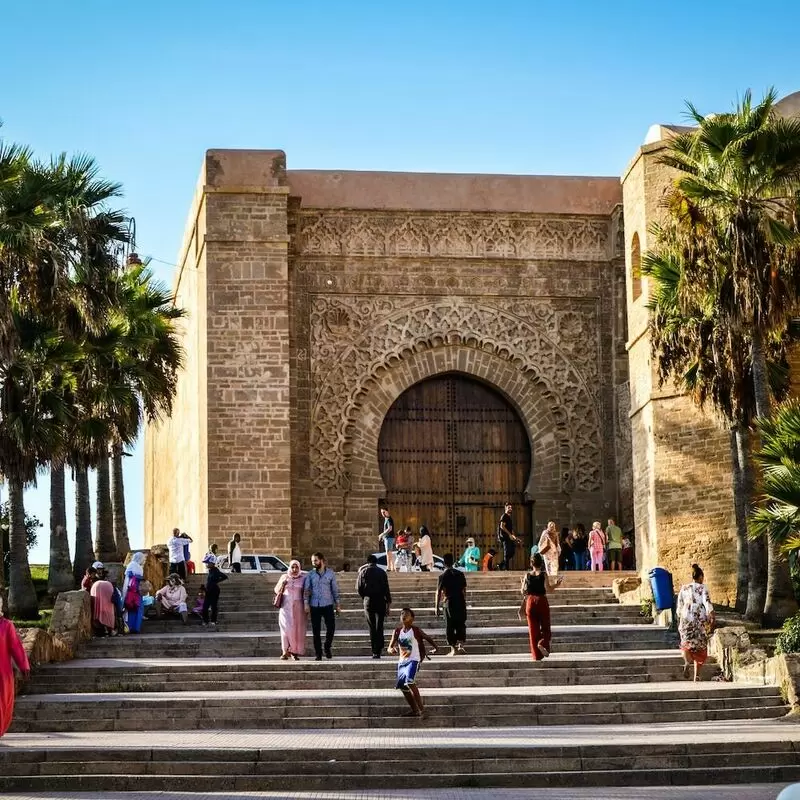
1. Hassan Tower
The Hassan Tower, Rabat's landmark, invites travelers to take an enchanting walk through history. This unfinished 12th century minaret, which reaches a height of 44 meters, offers a charming image of Almohad architecture. Look out for the 348 columns spread around the tower, which should form a large mosque. Near the tower you can visit the charming mausoleum of King Mohammed V, a marvel of modern architecture of the Alaouite dynasty with white exterior walls and a green tile roof symbolic of Morocco.
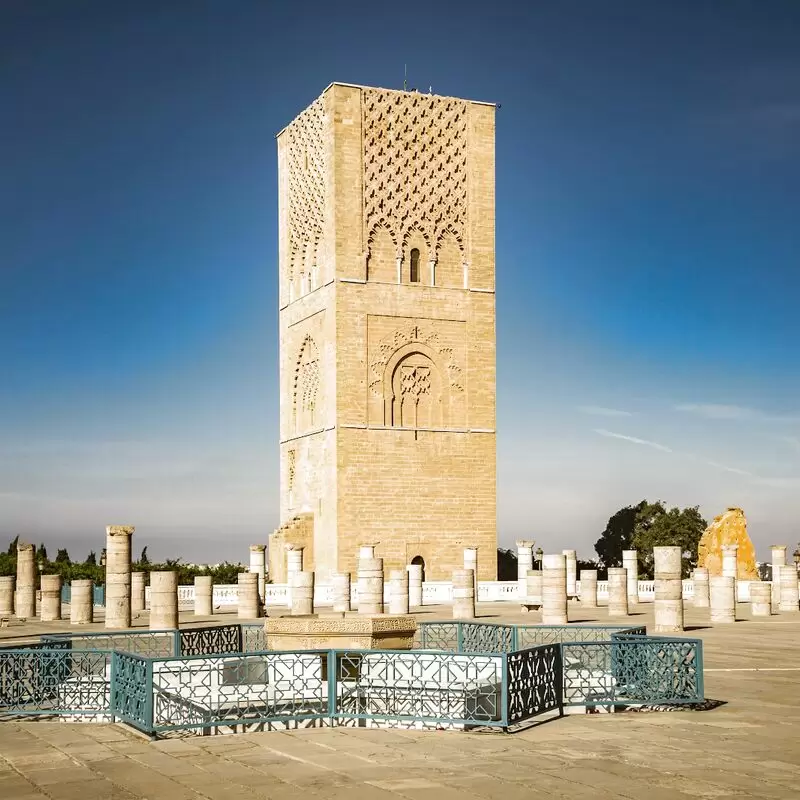 Hassan Tower
Hassan Tower
25FG+JRP, Bd Mohamed Lyazidi, Rabat
Monday - Sunday: 6:30 AM – 10:45 PM

25FG+JRP, Bd Mohamed Lyazidi, Rabat
2. National Zoo Rabat Morocco
Visiting the Rabat Morocco National Zoo, you will get to know an exotic fauna in the heart of Rabat. Marvel at Saharan species that have adapted to life in the desert, observe Moroccan wildlife in the alpine section and witness the ecosystem of the African savannah. You can also bird watch and spot different species of birds in the wetlands. Nearby, you can visit the Jardin Zoologique National de Rabat to complement your animal viewing.
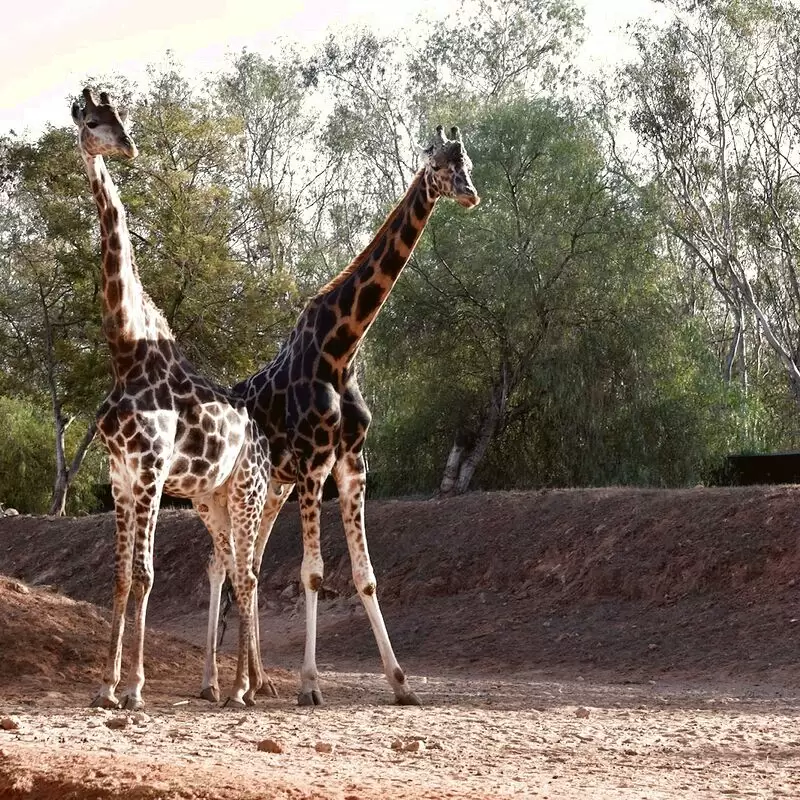 National Zoo Rabat Morocco
National Zoo Rabat Morocco
Annexe 23eme, (Ceinture verte), Cité Yacoub El Mansour,, Rabat
Monday - Sunday: 10:00 AM – 6:30 PM

Annexe 23eme, (Ceinture verte), Cité Yacoub El Mansour,, Rabat
3. Mausoleum of Mohammed V
Discover the royal splendor of the Mausoleum of Mohammed V in Rabat, a magnificent symbol of Morocco's architectural brilliance. Discover the rich history behind this resting place of beloved monarchs. Amid pure white marble and green tile roofs, catch a glimpse of the tradition of complex artisans. Just a short walk away is the fascinating Hassan Tower, an unfinished minaret that stands out impressively against Rabat's skyline - a must-see for architecture lovers. Immerse yourself in this testament to Rabat's royal past.
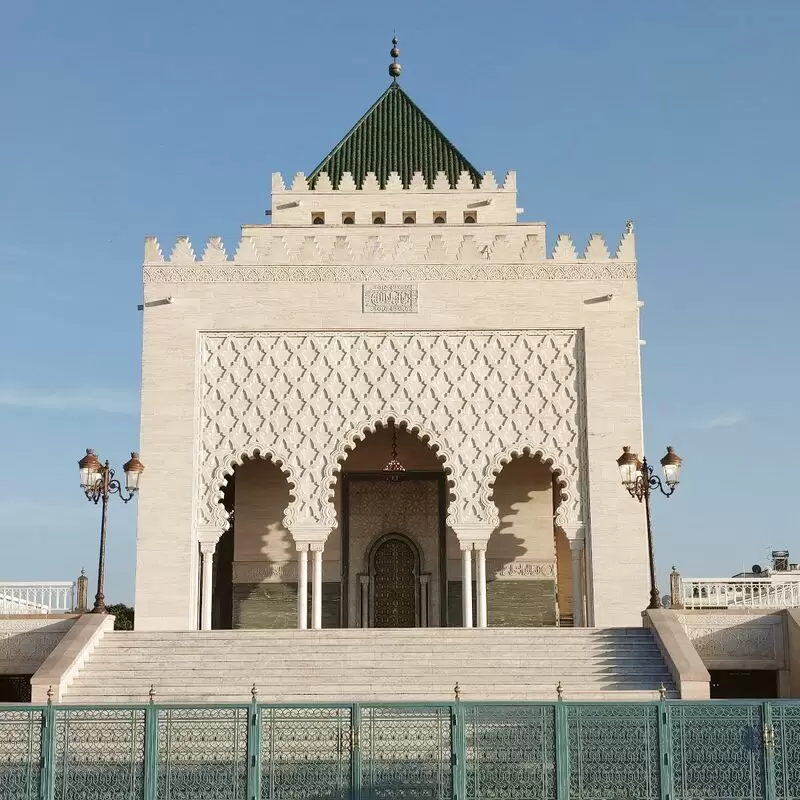 Mausoleum of Mohammed V
Mausoleum of Mohammed V
25FH+3C2, Rabat
Monday - Friday: 8:00 AM – 6:00 PM
Saturday - Sunday: 8:15 AM – 5:45 PM

25FH+3C2, Rabat
Saturday - Sunday: 8:15 AM – 5:45 PM
4. Kasbah of the Udayas
Discover the magic of history at the Kasbah of the Udayas, a 12th century fortress high above the coast of Rabat. Look over the ancient walls and enjoy the breathtaking view of the Atlantic Ocean and the Bou Regreg River. As you stroll through the narrow passages, admire the well-preserved Andalusian gardens created for Moroccan kings. Get lost in this lively maze of blue and white houses and take time for a refreshing mint tea in one of the city's traditional cafes. Just a few steps away, you'll find an equally enchanting sight: the beach of Rabat.
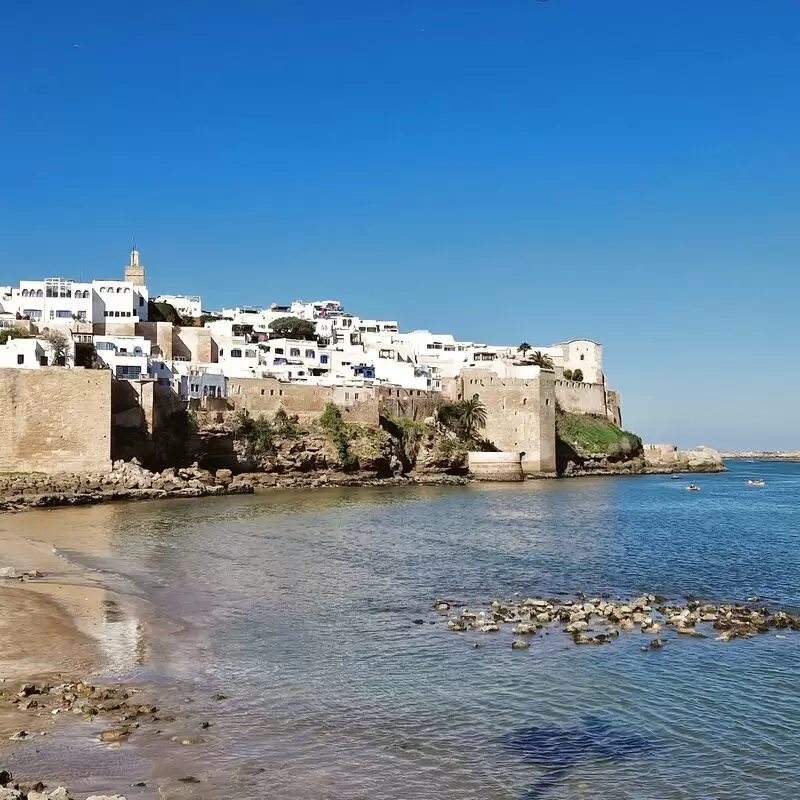 Kasbah of the Udayas
Kasbah of the Udayas
Pont Hassan II, Salé

Pont Hassan II, Salé
5. Les Jardins Exotiques de Bouknadel
Step into a living world of flora and fauna at Les Jardins Exotiques de Bouknadel in Rabat. This tranquil paradise is an oasis away from the city noise. Stroll through the exquisite flora, exotic birds and friendly monkeys - an experience for all ages. A little insider tip: don't miss the enchanting Japanese Garden! Just a stone's throw away is the Raissouni Palace, an architectural marvel with Spanish-Andalusian style buildings waiting to be explored.
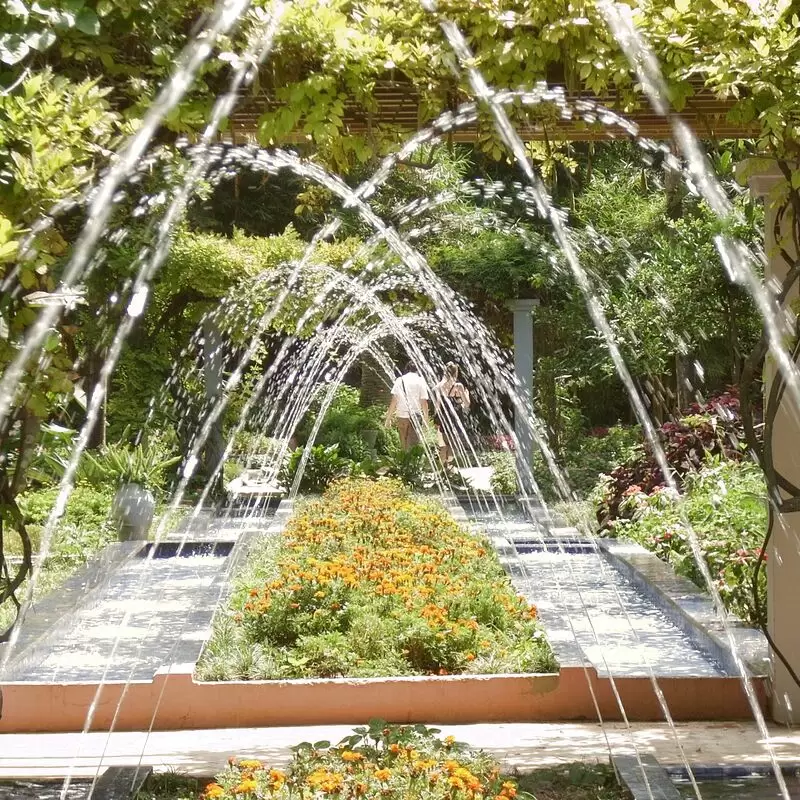 Les Jardins Exotiques de Bouknadel
Les Jardins Exotiques de Bouknadel
KM 13, Km 13 Rte de Rabat, Salé
Monday - Sunday: 9:00 AM – 6:30 PM

KM 13, Km 13 Rte de Rabat, Salé
6. Mohammed VI Museum of Modern and Contemporary Art
The Mohammed VI Museum of Modern and Contemporary Art is a must-see. It houses a range of Moroccan and international artworks in an impressive modern architecture. It is the first large-scale museum built in Morocco since independence. Regularly updated exhibitions keep art lovers coming back. Insider detail: There's a cozy café on the first floor for a coffee break. It's also a stone's throw from Le Tour Hassan, a picturesque historic site with an unfinished minaret surrounded by ruins.
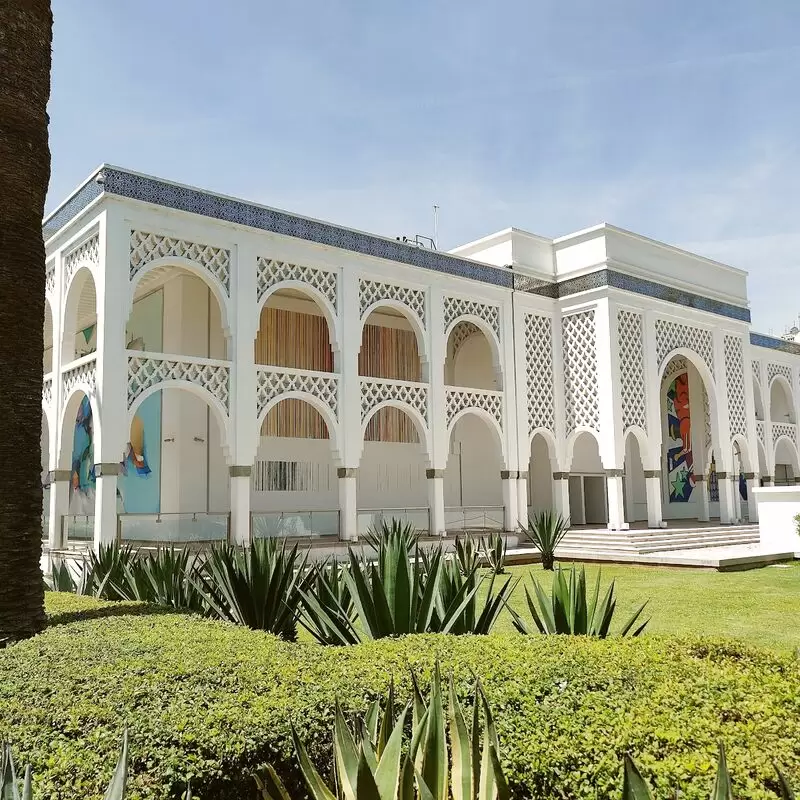 Mohammed VI Museum of Modern and Contemporary Art
Mohammed VI Museum of Modern and Contemporary Art
2 Av. Moulay Hassan, Rabat
Monday - Sunday: 10:00 AM – 6:00 PM
Tuesday: Closed
Friday: 9:45 AM – 6:00 PM

2 Av. Moulay Hassan, Rabat
Tuesday: Closed
Friday: 9:45 AM – 6:00 PM
7. Andalusian Gardens
Immerse yourself in the world of tranquility in the "Andalusian Gardens". A fragrant mosaic of orange trees, blooming flowers and chirping birds is the perfect place to escape the hustle and bustle of the city. Stroll through the winding paths and admire the Moorish architecture or relax by a pond full of water lilies. This is an insider's tip - discover the hidden ancient fountains! It's also just around the corner from the historic Kasbah of the Udayas, where timeless Moroccan charm meets breathtaking views of Bou Regreg and the Atlantic.
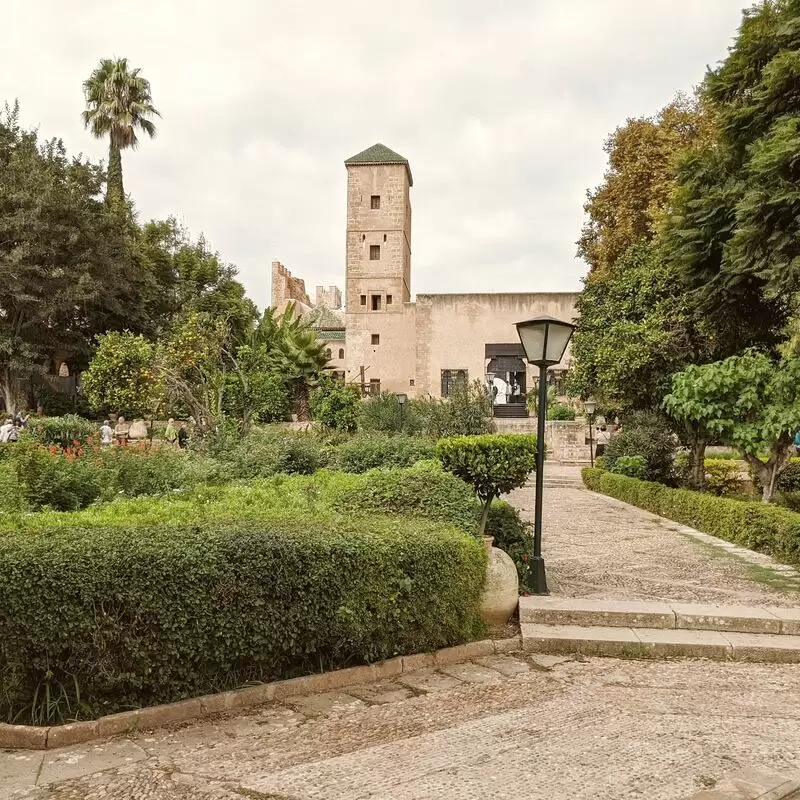 Andalusian Gardens
Andalusian Gardens
25J7+2VF, Rabat
Monday - Sunday: 10:00 AM – 5:30 PM
Tuesday: Closed

25J7+2VF, Rabat
Tuesday: Closed
8. Sidi Boughaba
Sidi-Boughaba is a must for nature lovers visiting Rabat. It is a birdwatcher's paradise, home to over 200 species of birds and a stunning freshwater lake and dense cork oak forests to explore. In the fall and spring, beautiful migratory birds can be seen here. It is only a short drive from historic Kebibat. Although Kebibat is less well known to tourists, it is home to a number of Moroccan traditions and culture worth exploring.
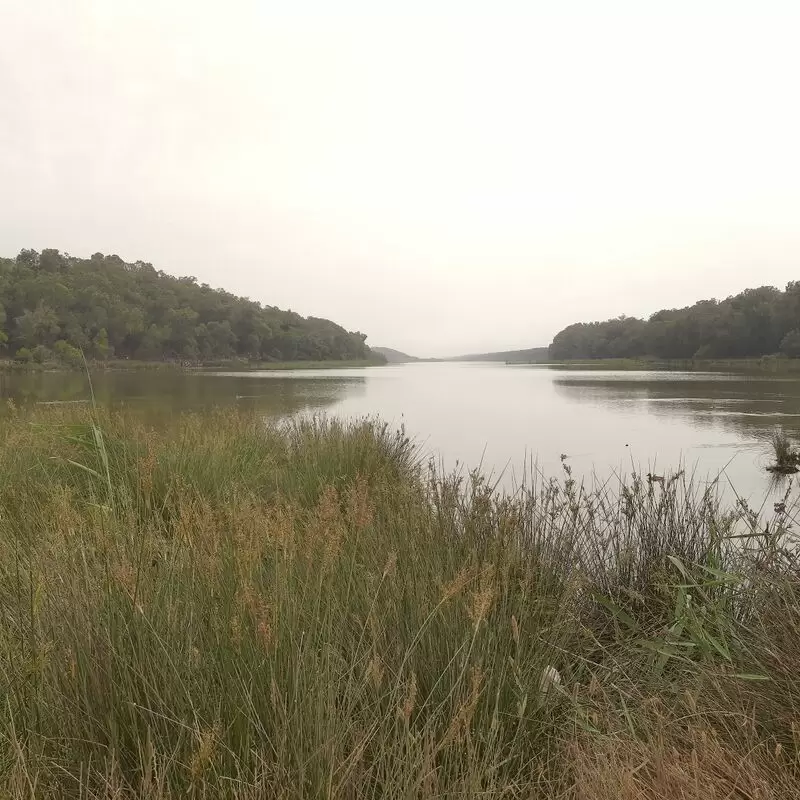 Sidi Boughaba
Sidi Boughaba
68P8+3X9, Kenitra
Monday - Sunday: Open 24 hours

68P8+3X9, Kenitra
9. Urban Forest Ibn Sina Hilton"
In the heart of Rabat you can relax in the Urban Forest Ibn Sina "Hilton". This green oasis offers a harmonious blend of natural beauty and tranquility, ideal for relaxing. It is said that some of the trees here are more than a century old! After immersing yourself in the rich biodiversity, a short walk will take you to the fascinating Andalusian Gardens. A quaint little café in the gardens, known only to locals, serves the best Moroccan mint tea in town.
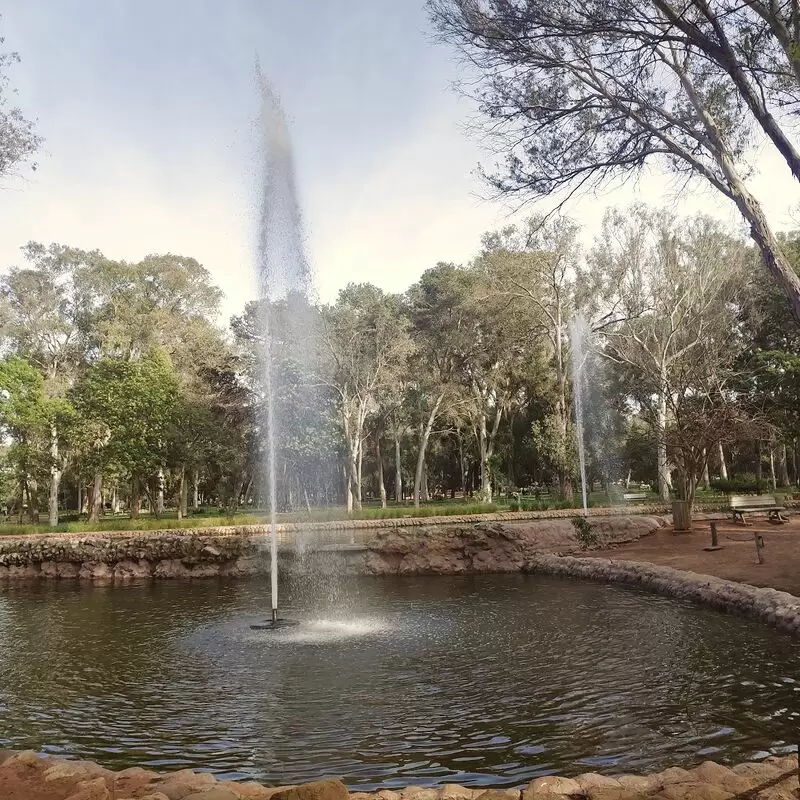 Urban Forest Ibn Sina Hilton"
Urban Forest Ibn Sina Hilton"
Rabat
Monday - Sunday: 5:00 AM – 8:00 PM

Rabat
10. Rabat Old Market
Immerse yourself in history at Rabat's Old Market, a vibrant maze of stalls selling traditional Moroccan goods. Marvel at the handmade leather goods, hand-woven rugs and colorful spices. In the mood for a culinary adventure? The food department offers an authentic taste of Morocco. Nearby, Hassan Tower and the Mausoleum of Mohammed V bear witness to the city's rich cultural heritage. Don't forget to haggle, it's all part of the fun. Don't forget to visit the secret corners recommended by the locals - a true cultural experience awaits you.
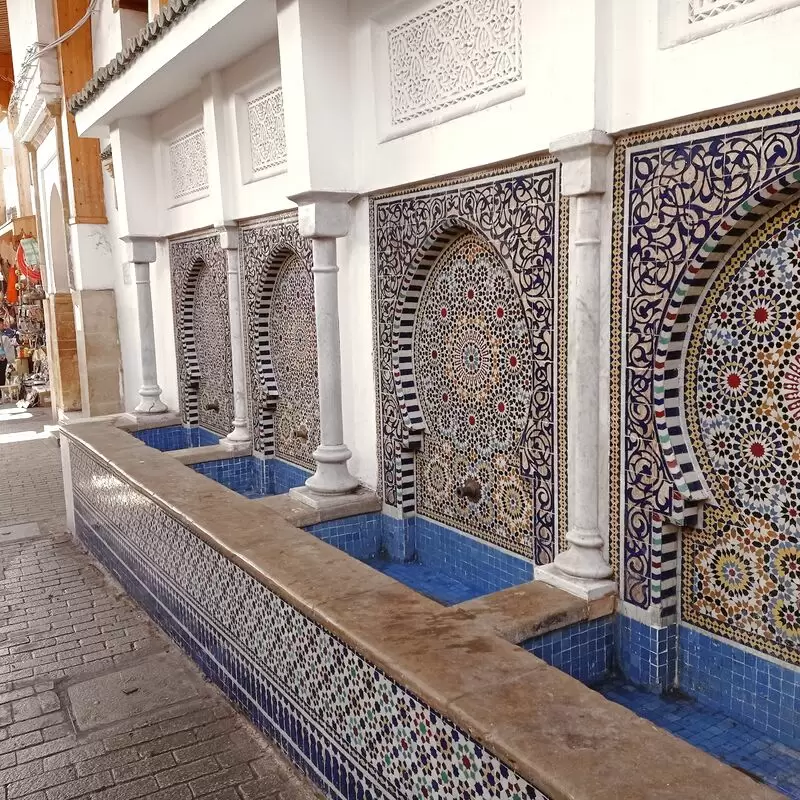 Rabat Old Market
Rabat Old Market
25G8+XJF, Avenue des consuls, Rabat
Monday - Sunday: 10:00 AM – 11:00 PM

25G8+XJF, Avenue des consuls, Rabat
11. Nouzhat Hassan Garden
The Nouzhat Hassan Garden beckons with an inviting tranquility found only in Rabat. This tranquil oasis of lush vegetation, vibrant flowers and towering palms is a relaxing escape from the hustle and bustle of city life. Here you'll experience Moroccan culture up close as locals enjoy an afternoon picnic. The Abdul Cinema is just a stone's throw away and is perfect for an evening's entertainment after a calming walk in the garden. Senses are pampered with natural scents and travelers feel completely rooted in Moroccan culture.
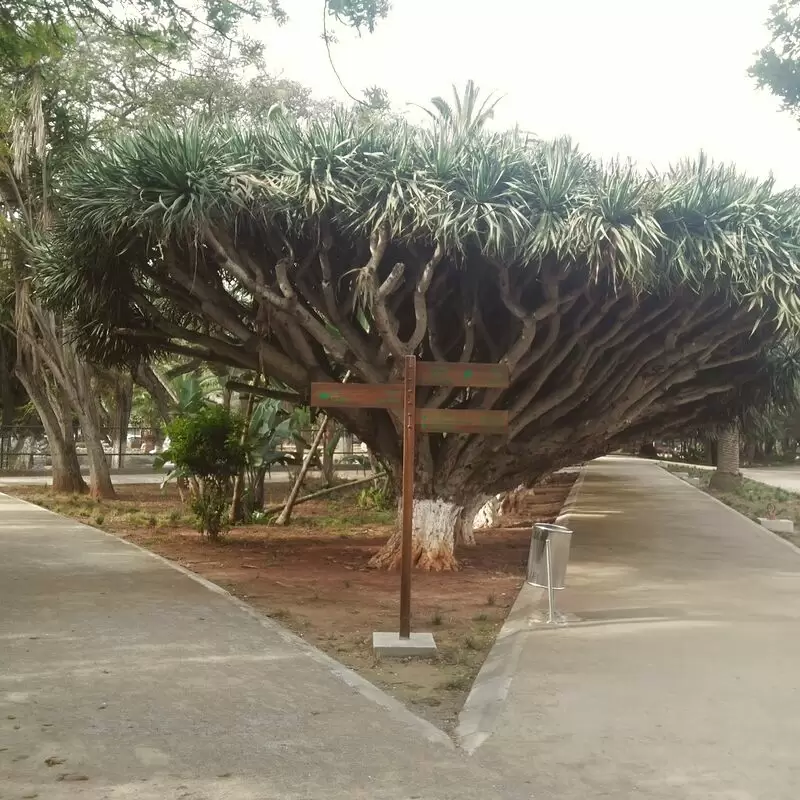 Nouzhat Hassan Garden
Nouzhat Hassan Garden
25C7+PRG, Rabat
Monday - Sunday: 8:00 AM – 6:00 PM

25C7+PRG, Rabat
12. Théâtre National Mohammed V
A visit to the Théâtre National Mohammed V in Rabat is like a journey into a magical world of art. Marvel at the grandiose architecture that reflects Moroccan traditions and modern styles. Experience world-class performances ranging from music concerts to operas to ballet performances. And when the stage curtain falls, take a detour - the Grand Palace, with its historic charm, is just around the corner, and don't miss the central market, a haven for Moroccan crafts and food. Locals agree that the theater district is a feast for the senses.
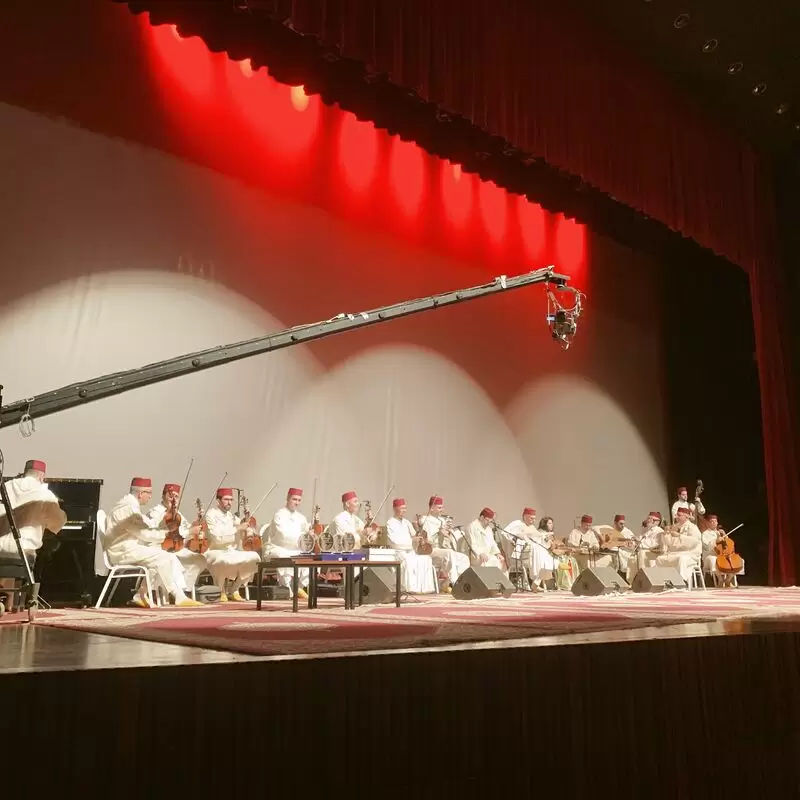 Théâtre National Mohammed V
Théâtre National Mohammed V
B.P.:, 172 Av. Al Mansour Addahbi, Rabat

B.P.:, 172 Av. Al Mansour Addahbi, Rabat
13. Mohammed VI bridge
A fascinating spectacle of modern technology awaits you on the Mohammed VI Bridge. A landmark of Rabat, the bridge is illuminated after sunset and reflects the Bouregreg River. Don't miss the sunset view for your travel album. After crossing, sneak off to the great "Chellah Necropolis" just a 15-minute drive away, where history whispers in its ruins. An insider tip: On quiet nights you can watch the colorful spectacle of the bridge from the historic site of Chellah!
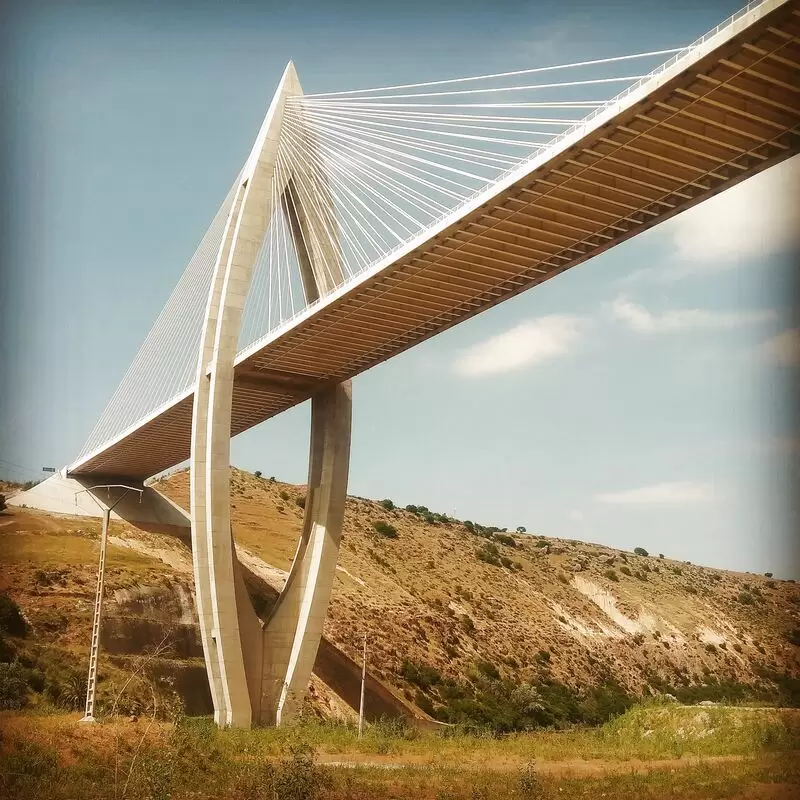 Mohammed VI bridge
Mohammed VI bridge
Rabat Grand Bypass
Monday - Sunday: Open 24 hours

Rabat Grand Bypass
14. Villa des Arts
The Villa des Arts in Rabat is a must-see for art and culture lovers. This fascinating Art Deco-style villa, adorned with important art collections from different eras, offers a perfect niche to immerse yourself in the artistic spirit of Morocco. Don't forget to visit the regular exhibitions showcasing regional talent. After soaking in the cultural splendor, take a leisurely stroll through the flowering park nearby. And of course, don't miss the majestic Mohammed V Theater, just a short walk away, to add a touch of performing arts to your visit.
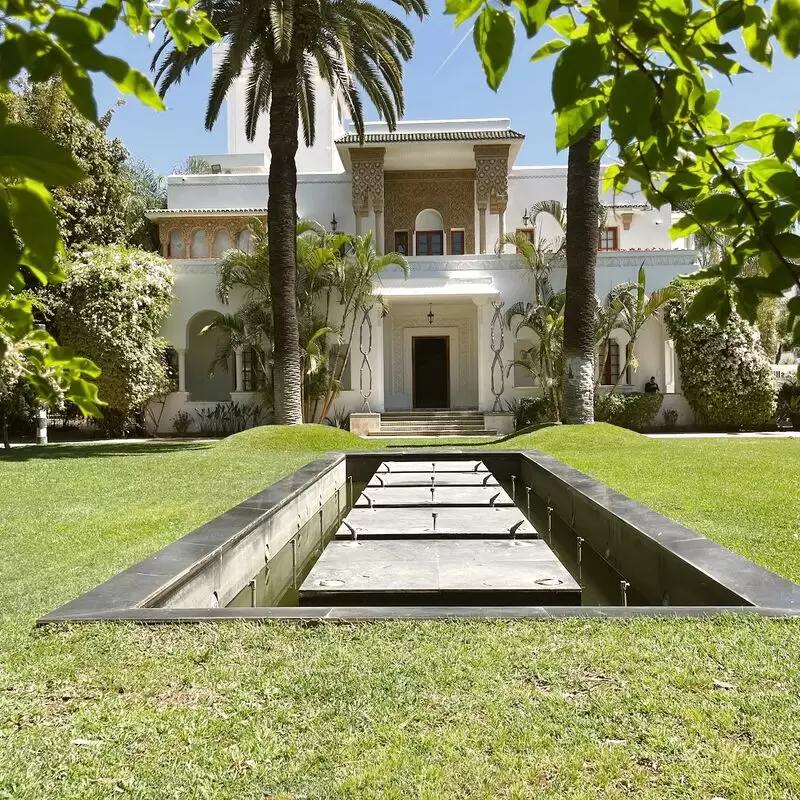 Villa des Arts
Villa des Arts
10 Rue Beni Mellal, Hassan, Rabat
Monday: Closed
Tuesday - Sunday: 9:00 AM – 7:00 PM

10 Rue Beni Mellal, Hassan, Rabat
Tuesday - Sunday: 9:00 AM – 7:00 PM
15. St. Peter's Cathedral
In the heart of Rabat is an architectural gem, the Cathedral of St. Peter, a blend of Moroccan and European design. Be enchanted by the fascinating facade, the magnificent stained glass windows and the overwhelming calm that reigns inside. Hear the mighty organs of the cathedral resound and feel the city's past within its walls. Don't miss the grand bazaar just around the corner, where you can make fascinating local purchases. This cathedral will add an unexpected dimension to your Morocco trip.
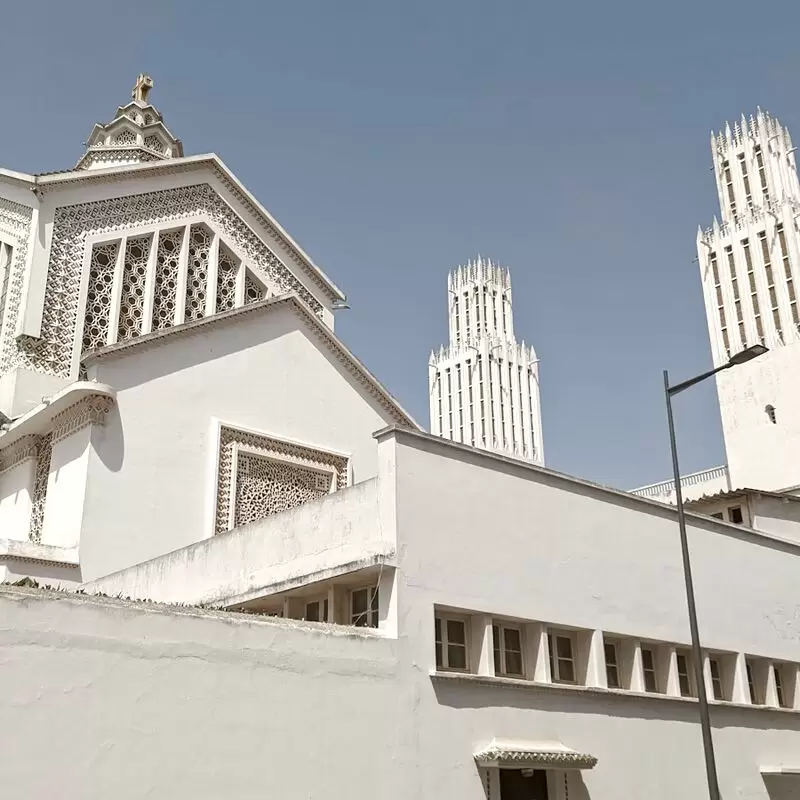 St. Peter's Cathedral
St. Peter's Cathedral
à la jonction des 2 lignes de tramway، ساحة الجولان، Rabat،
Monday - Saturday: 10:00 AM – 12:00 PM, 2:00 – 5:00 PM
Sunday: 10:00 AM – 1:00 PM

à la jonction des 2 lignes de tramway، ساحة الجولان، Rabat،
Sunday: 10:00 AM – 1:00 PM
Best Time to Visit Rabat
The best time to visit Rabat, Morocco, is spring (April to June) or fall (September to November). These seasons have moderate temperatures that are ideal for exploring. It can get quite hot in the summer months and occasionally chilly in the winter.
Annual Weather in Rabat
January
Jan
51 / 67 °F
10 / 19 °C
1
5
76
February
Feb
51 / 69 °F
11 / 21 °C
1
4
74
March
Mar
53 / 70 °F
12 / 21 °C
1
5
91
April
Apr
56 / 75 °F
13 / 24 °C
0
4
82
May
May
61 / 79 °F
16 / 26 °C
0
2
97
June
Jun
65 / 83 °F
19 / 28 °C
0
1
103
July
Jul
69 / 87 °F
20 / 30 °C
0
0
112
August
Aug
70 / 88 °F
21 / 31 °C
0
0
112
September
Sep
68 / 83 °F
20 / 28 °C
0
1
99
October
Oct
65 / 83 °F
19 / 28 °C
0
3
99
November
Nov
58 / 73 °F
15 / 23 °C
1
5
78
December
Dec
54 / 70 °F
12 / 21 °C
1
4
85
Questions & Answers
What language is commonly spoken in Rabat?
In Rabat, the capital of Morocco, the two most commonly spoken languages are Arabic and French. Darija, a dialect of Arabic, is the everyday language of most residents. French is also widely spoken, especially in business, government, and education. Some locals also speak English or Spanish due to the influences of tourism and foreign education, but to a lesser extent than Arabic and French.
Is Rabat a safe city for travelers?
While no city is completely immune to crime, Rabat is generally safe for travelers if they have taken adequate precautions. As in most places, pickpocketing and purse snatching are the most common types of crime. Occasionally, there are minor protests or national strikes that can disrupt travel plans. In general, however, Rabat is safe and friendly, and reliable security services ensure the well-being of visitors.
What currency is used in Rabat?
Rabat, the capital of Morocco, uses the Moroccan dirham as its official currency. The dirham is often referred to as the MAD. It is divided into 100 centimes. Coins come in denominations of 1, 2, 5 and 10 dirhams, as well as 10, 20 and 50 centimes. Banknotes come in 20, 50, 100 and 200 dirhams. It is always a good idea to have some local currency with you.
How is the local food in Rabat?
Rabat offers a diverse culinary scene that represents the rich Moroccan cuisine. It combines Berber, Arabic, Andalusian and Mediterranean cuisine with a subtle French influence. Typical dishes such as couscous, tagines and harira are served with distinct local flavors. Due to the coastal location, there are also exquisite fish and seafood dishes. Freshly baked Moroccan bread, sweet mint tea and delicate pastries deliciously round out any meal. Food in Rabat is characterized by savory spices, fresh local produce and a welcoming community tradition.
Are there opportunities for learning traditional crafts in Rabat?
Yes, Rabat offers several opportunities to learn traditional Moroccan crafts. Many local artisans and workshops offer courses in pottery, textile weaving, and leatherwork, among others. Visitors can learn ancient techniques for making traditional Moroccan handicrafts. Workshops are often tailored to all skill levels, from beginners to experienced artisans. Such experiences provide a rich cultural understanding of Moroccan heritage and are a must when visiting Rabat.
What's the best way to get around Rabat?
The best way to get around Rabat is by cabs and streetcars. Cabs, both petit (small) and grand (large), are widely available and offer a convenient way to reach different parts of the city. The streetcar, on the other hand, offers a more scenic ride and connects the main neighborhoods of Rabat and its sister city, Sale. The compact city center can also be explored on foot, giving travelers the opportunity to fully enjoy the atmosphere.
How reliable is public transportation in Rabat?
Public transportation in Rabat is generally reliable and efficient, and includes a range of options such as streetcars, buses, and cabs. The streetcar system is modern and punctual, connecting most major areas of the city. Buses are also widely available and punctual, although they are somewhat slower due to traffic. Cabs are plentiful and reasonably priced. However, as in all cities, you should expect some delays during rush hours.
Is drinking tap water safe in Rabat?
Although tap water in Rabat is generally considered safe due to the treatment processes, it can cause mild digestive problems for foreigners who are not used to it. For this reason, many travelers choose to drink bottled or purified water to avoid possible stomach upset. It is also recommended to avoid ice in drinks, as it may have been made from tap water.
Where can I find local artists' work in Rabat?
In Rabat, local artists offer a wonderful selection of traditional and contemporary works. The Mohammed VI Museum is a good place to discover modern and contemporary Moroccan art. Rabat's medina has many small stores where local artisans display their work, including rugs, ceramics and leather goods. For a wider range and more diverse artwork, you can also visit the Villa des Arts, an important cultural center in the city, where a number of artistic disciplines are exhibited.
How is the nightlife in Rabat?
Rabat has a relaxed yet vibrant nightlife that perfectly blends traditional Moroccan charm with modern tastes. The city is home to numerous cozy cafes, lively bars, elegant loungo clubs, and occasional beach parties that are enjoyed by locals and tourists alike. Many of these venues feature live traditional music and dance performances, adding rich cultural flair to the city's nighttime ambiance. Amidst these exciting options, Rabat guarantees an unforgettable nighttime experience.
How common are English signs in major tourist areas of Rabat?
In Rabat, many signs, especially at major tourist sites, are bilingual, often in both Arabic and French, due to Morocco's past as a French protectorate. However, due to the increase in global tourism, more and more English signs are being used. Not all places have English translations, but places such as museums, hotels, and other tourist attractions usually do. Nevertheless, it is advisable for visitors to learn basic phrases in Arabic or French to better navigate their way around.
Is there a dress code to follow in Rabat?
While there is no strict dress code in Rabat, Morocco, it is advisable to dress modestly as a sign of respect for the local culture. Women in particular should avoid revealing clothing and wear long skirts or pants and cover their shoulders and arms. Men may wear shorts, but long pants are generally more appropriate. Despite these recommendations, Rabat is quite cosmopolitan, and you will see a range of clothing styles that reflect the city's mix of traditional and modern.
How can I be respectful of local customs and etiquette in Rabat?
In Rabat, Morocco, you should always greet with your right hand and dress modestly to respect Islamic customs. Public displays of affection are generally frowned upon. Although Moroccans are very hospitable and open, it is important to avoid sensitive topics such as religion and politics. Tipping is common, so remember to leave change in cafes and round up cab fares. Learning a few words of Arabic or French is also beneficial.
Does Rabat have free wifi spots?
Yes, Rabat, like many modern cities, offers free WiFi spots. These are usually accessible in popular public areas such as parks, libraries, cafes and restaurants. Many hotels and hostels in the city also offer free WiFi to their guests. However, the strength and speed of the internet can vary from place to place. It is advisable to have a local SIM card for uninterrupted internet access, especially when moving outside the city center.
Is there a tipping culture in Rabat?
Yes, there is a tipping culture in Rabat, Morocco. Tipping is seen as an expression of gratitude for good service. It is quite common to tip waiters, hotel staff, cab drivers and tour guides. How much to tip depends on the quality of the service, but it is usually expected to be 10% of the bill. It is always appreciated and is an important additional income for service personnel.
How easy is it to get a taxi in Rabat?
Getting a cab in Rabat is quite easy as they are plentiful. You can hail a cab directly on the street or book one through your hotel or a cab app like Careem. There are two types of cabs: petit cabs for short trips within the city and grand cabs for longer trips. Always make sure the taxi meter is running to avoid overcharging. Cabs are usually cream colored and have a sign on the roof.
Are there vegetarian or vegan food options in Rabat?
Yes, Rabat, the capital of Morocco, is suitable for vegetarians and vegans alike. Moroccan cuisine is enriched with a variety of flavors, many of which are plant-based. Traditional dishes such as vegetable tagine or couscous often lend themselves to a vegetarian diet. Several restaurants in Rabat also offer special vegetarian or vegan menus, offering a wide range from traditional Moroccan dishes to international cuisine.
Can I use credit cards widely in Rabat?
Yes, using credit cards in Rabat is generally convenient, as most upscale hotels, restaurants and large stores accept them. However, cash is usually preferred in marketplaces, small stores or traditional restaurants. The most common cards are Visa and MasterCard, but others may not be accepted everywhere. Be sure to have enough local currency on hand in areas where card transactions are not possible. Also, inform your bank about your trip to avoid possible card blocking.
What is the average cost of a meal in Rabat?
In Rabat, the cost of a meal can vary greatly depending on where you choose to eat. On average, you should expect to pay 30 to 50 Moroccan dirhams (about $3 to $5) for a simple meal at a basic restaurant. However, in more upscale restaurants, meals can cost between 150 and 200 dirhams ($15-$20). Note that these prices can vary depending on the type of dishes ordered and the location of the restaurant. Also, seafood and imported products are likely to be more expensive.
Are certain areas of Rabat better to stay in for tourists?
Yes, for tourists, the ideal place to stay in Rabat is the medina and kasbah of the Udayas area and its surroundings. This place offers a lively mix of traditional Moroccan culture and impressive architecture. Major attractions such as the Kasbah of the Udayas, the Medina of Rabat and the Andalusian Gardens are all nearby. There is also a range of accommodation and restaurants to suit all budgets. Since it is a well-developed area, tourists can feel safe here.
Can I use my smartphone's map and other apps in Rabat?
Yes, you can use the map and other apps on your smartphone in Rabat, Morocco. However, keep in mind that roaming charges may apply if you use non-local networks. To avoid this, buy a local SIM card, use prepaid data, or connect to free WIFI, which is usually available in hotels, cafes, and restaurants. Apps should work as usual, but be careful with your data usage.
What's the best way to meet locals in Rabat?
To get to know the locals in Rabat, it is ideal to go to popular places such as cafes, bazaars and local events. Participating in language exchange groups or small Moroccan cooking classes can lead to interesting encounters. Visit the lively medina and souq to experience local life in all its glory. It is also a good idea to strike up a conversation with the cab drivers, who are usually happy to talk about Moroccan culture.
Are there any unique traditions in Rabat?
Rabat, the capital of Morocco, is known for its vibrant traditions interwoven with daily life. One unique tradition is the daily ceremonial relieving of the royal guard at the Royal Palace, enjoyed by tourists. Another is the traditional Moroccan hammam, a unique experience of Arab culture where locals spend hours in steam baths getting massages. The city is also known for its artisan heritage, especially for the production of the traditional "babouche" slippers.
Is Rabat safe for solo female travelers?
Rabat, the capital of Morocco, is generally safe for solo female travelers, especially compared to other cities in Morocco. It has a quieter, more relaxed atmosphere with less hustle and bustle than other major Moroccan cities. As in any city, street harassment can occur, but it tends to be less aggressive here. Nevertheless, women are advised to dress conservatively and respectfully and to exhibit careful, deliberate behavior, especially at night or in less crowded areas.
How accessible is Rabat for disabled travelers?
As in many older cities, uneven and narrow sidewalks, lack of curb ramps, and limited access to many buildings in Rabat can present challenges for wheelchair users. Public transportation may not be fully equipped for travelers with mobility issues. However, it is worth noting that several tour operators offer customized services for travelers with special needs, and the larger hotels usually have more accessible facilities. It is advisable to plan your visit carefully and make arrangements in advance.
Feedback
I hope you found this article informative and helpful. I'm eager to improve the content and make it even more valuable for you. If you have any feedback or suggestions, I would love to hear from you.
Do you have any tips or hidden gems that you think should be added to the list? Are there any areas that you feel could use more explanation or clarification?
Your input is greatly appreciated and will help us to continue providing high-quality content that meets your needs and interests. Please feel free to share your thoughts.
What language is commonly spoken in Rabat?
In Rabat, the capital of Morocco, the two most commonly spoken languages are Arabic and French. Darija, a dialect of Arabic, is the everyday language of most residents. French is also widely spoken, especially in business, government, and education. Some locals also speak English or Spanish due to the influences of tourism and foreign education, but to a lesser extent than Arabic and French.
Is Rabat a safe city for travelers?
While no city is completely immune to crime, Rabat is generally safe for travelers if they have taken adequate precautions. As in most places, pickpocketing and purse snatching are the most common types of crime. Occasionally, there are minor protests or national strikes that can disrupt travel plans. In general, however, Rabat is safe and friendly, and reliable security services ensure the well-being of visitors.
What currency is used in Rabat?
Rabat, the capital of Morocco, uses the Moroccan dirham as its official currency. The dirham is often referred to as the MAD. It is divided into 100 centimes. Coins come in denominations of 1, 2, 5 and 10 dirhams, as well as 10, 20 and 50 centimes. Banknotes come in 20, 50, 100 and 200 dirhams. It is always a good idea to have some local currency with you.
How is the local food in Rabat?
Rabat offers a diverse culinary scene that represents the rich Moroccan cuisine. It combines Berber, Arabic, Andalusian and Mediterranean cuisine with a subtle French influence. Typical dishes such as couscous, tagines and harira are served with distinct local flavors. Due to the coastal location, there are also exquisite fish and seafood dishes. Freshly baked Moroccan bread, sweet mint tea and delicate pastries deliciously round out any meal. Food in Rabat is characterized by savory spices, fresh local produce and a welcoming community tradition.
Are there opportunities for learning traditional crafts in Rabat?
Yes, Rabat offers several opportunities to learn traditional Moroccan crafts. Many local artisans and workshops offer courses in pottery, textile weaving, and leatherwork, among others. Visitors can learn ancient techniques for making traditional Moroccan handicrafts. Workshops are often tailored to all skill levels, from beginners to experienced artisans. Such experiences provide a rich cultural understanding of Moroccan heritage and are a must when visiting Rabat.
What's the best way to get around Rabat?
The best way to get around Rabat is by cabs and streetcars. Cabs, both petit (small) and grand (large), are widely available and offer a convenient way to reach different parts of the city. The streetcar, on the other hand, offers a more scenic ride and connects the main neighborhoods of Rabat and its sister city, Sale. The compact city center can also be explored on foot, giving travelers the opportunity to fully enjoy the atmosphere.
How reliable is public transportation in Rabat?
Public transportation in Rabat is generally reliable and efficient, and includes a range of options such as streetcars, buses, and cabs. The streetcar system is modern and punctual, connecting most major areas of the city. Buses are also widely available and punctual, although they are somewhat slower due to traffic. Cabs are plentiful and reasonably priced. However, as in all cities, you should expect some delays during rush hours.
Is drinking tap water safe in Rabat?
Although tap water in Rabat is generally considered safe due to the treatment processes, it can cause mild digestive problems for foreigners who are not used to it. For this reason, many travelers choose to drink bottled or purified water to avoid possible stomach upset. It is also recommended to avoid ice in drinks, as it may have been made from tap water.
Where can I find local artists' work in Rabat?
In Rabat, local artists offer a wonderful selection of traditional and contemporary works. The Mohammed VI Museum is a good place to discover modern and contemporary Moroccan art. Rabat's medina has many small stores where local artisans display their work, including rugs, ceramics and leather goods. For a wider range and more diverse artwork, you can also visit the Villa des Arts, an important cultural center in the city, where a number of artistic disciplines are exhibited.
How is the nightlife in Rabat?
Rabat has a relaxed yet vibrant nightlife that perfectly blends traditional Moroccan charm with modern tastes. The city is home to numerous cozy cafes, lively bars, elegant loungo clubs, and occasional beach parties that are enjoyed by locals and tourists alike. Many of these venues feature live traditional music and dance performances, adding rich cultural flair to the city's nighttime ambiance. Amidst these exciting options, Rabat guarantees an unforgettable nighttime experience.
How common are English signs in major tourist areas of Rabat?
In Rabat, many signs, especially at major tourist sites, are bilingual, often in both Arabic and French, due to Morocco's past as a French protectorate. However, due to the increase in global tourism, more and more English signs are being used. Not all places have English translations, but places such as museums, hotels, and other tourist attractions usually do. Nevertheless, it is advisable for visitors to learn basic phrases in Arabic or French to better navigate their way around.
Is there a dress code to follow in Rabat?
While there is no strict dress code in Rabat, Morocco, it is advisable to dress modestly as a sign of respect for the local culture. Women in particular should avoid revealing clothing and wear long skirts or pants and cover their shoulders and arms. Men may wear shorts, but long pants are generally more appropriate. Despite these recommendations, Rabat is quite cosmopolitan, and you will see a range of clothing styles that reflect the city's mix of traditional and modern.
How can I be respectful of local customs and etiquette in Rabat?
In Rabat, Morocco, you should always greet with your right hand and dress modestly to respect Islamic customs. Public displays of affection are generally frowned upon. Although Moroccans are very hospitable and open, it is important to avoid sensitive topics such as religion and politics. Tipping is common, so remember to leave change in cafes and round up cab fares. Learning a few words of Arabic or French is also beneficial.
Does Rabat have free wifi spots?
Yes, Rabat, like many modern cities, offers free WiFi spots. These are usually accessible in popular public areas such as parks, libraries, cafes and restaurants. Many hotels and hostels in the city also offer free WiFi to their guests. However, the strength and speed of the internet can vary from place to place. It is advisable to have a local SIM card for uninterrupted internet access, especially when moving outside the city center.
Is there a tipping culture in Rabat?
Yes, there is a tipping culture in Rabat, Morocco. Tipping is seen as an expression of gratitude for good service. It is quite common to tip waiters, hotel staff, cab drivers and tour guides. How much to tip depends on the quality of the service, but it is usually expected to be 10% of the bill. It is always appreciated and is an important additional income for service personnel.
How easy is it to get a taxi in Rabat?
Getting a cab in Rabat is quite easy as they are plentiful. You can hail a cab directly on the street or book one through your hotel or a cab app like Careem. There are two types of cabs: petit cabs for short trips within the city and grand cabs for longer trips. Always make sure the taxi meter is running to avoid overcharging. Cabs are usually cream colored and have a sign on the roof.
Are there vegetarian or vegan food options in Rabat?
Yes, Rabat, the capital of Morocco, is suitable for vegetarians and vegans alike. Moroccan cuisine is enriched with a variety of flavors, many of which are plant-based. Traditional dishes such as vegetable tagine or couscous often lend themselves to a vegetarian diet. Several restaurants in Rabat also offer special vegetarian or vegan menus, offering a wide range from traditional Moroccan dishes to international cuisine.
Can I use credit cards widely in Rabat?
Yes, using credit cards in Rabat is generally convenient, as most upscale hotels, restaurants and large stores accept them. However, cash is usually preferred in marketplaces, small stores or traditional restaurants. The most common cards are Visa and MasterCard, but others may not be accepted everywhere. Be sure to have enough local currency on hand in areas where card transactions are not possible. Also, inform your bank about your trip to avoid possible card blocking.
What is the average cost of a meal in Rabat?
In Rabat, the cost of a meal can vary greatly depending on where you choose to eat. On average, you should expect to pay 30 to 50 Moroccan dirhams (about $3 to $5) for a simple meal at a basic restaurant. However, in more upscale restaurants, meals can cost between 150 and 200 dirhams ($15-$20). Note that these prices can vary depending on the type of dishes ordered and the location of the restaurant. Also, seafood and imported products are likely to be more expensive.
Are certain areas of Rabat better to stay in for tourists?
Yes, for tourists, the ideal place to stay in Rabat is the medina and kasbah of the Udayas area and its surroundings. This place offers a lively mix of traditional Moroccan culture and impressive architecture. Major attractions such as the Kasbah of the Udayas, the Medina of Rabat and the Andalusian Gardens are all nearby. There is also a range of accommodation and restaurants to suit all budgets. Since it is a well-developed area, tourists can feel safe here.
Can I use my smartphone's map and other apps in Rabat?
Yes, you can use the map and other apps on your smartphone in Rabat, Morocco. However, keep in mind that roaming charges may apply if you use non-local networks. To avoid this, buy a local SIM card, use prepaid data, or connect to free WIFI, which is usually available in hotels, cafes, and restaurants. Apps should work as usual, but be careful with your data usage.
What's the best way to meet locals in Rabat?
To get to know the locals in Rabat, it is ideal to go to popular places such as cafes, bazaars and local events. Participating in language exchange groups or small Moroccan cooking classes can lead to interesting encounters. Visit the lively medina and souq to experience local life in all its glory. It is also a good idea to strike up a conversation with the cab drivers, who are usually happy to talk about Moroccan culture.
Are there any unique traditions in Rabat?
Rabat, the capital of Morocco, is known for its vibrant traditions interwoven with daily life. One unique tradition is the daily ceremonial relieving of the royal guard at the Royal Palace, enjoyed by tourists. Another is the traditional Moroccan hammam, a unique experience of Arab culture where locals spend hours in steam baths getting massages. The city is also known for its artisan heritage, especially for the production of the traditional "babouche" slippers.
Is Rabat safe for solo female travelers?
Rabat, the capital of Morocco, is generally safe for solo female travelers, especially compared to other cities in Morocco. It has a quieter, more relaxed atmosphere with less hustle and bustle than other major Moroccan cities. As in any city, street harassment can occur, but it tends to be less aggressive here. Nevertheless, women are advised to dress conservatively and respectfully and to exhibit careful, deliberate behavior, especially at night or in less crowded areas.
How accessible is Rabat for disabled travelers?
As in many older cities, uneven and narrow sidewalks, lack of curb ramps, and limited access to many buildings in Rabat can present challenges for wheelchair users. Public transportation may not be fully equipped for travelers with mobility issues. However, it is worth noting that several tour operators offer customized services for travelers with special needs, and the larger hotels usually have more accessible facilities. It is advisable to plan your visit carefully and make arrangements in advance.
Feedback
I hope you found this article informative and helpful. I'm eager to improve the content and make it even more valuable for you. If you have any feedback or suggestions, I would love to hear from you.
Do you have any tips or hidden gems that you think should be added to the list? Are there any areas that you feel could use more explanation or clarification?
Your input is greatly appreciated and will help us to continue providing high-quality content that meets your needs and interests. Please feel free to share your thoughts.
I hope you found this article informative and helpful. I'm eager to improve the content and make it even more valuable for you. If you have any feedback or suggestions, I would love to hear from you.
Do you have any tips or hidden gems that you think should be added to the list? Are there any areas that you feel could use more explanation or clarification?
Your input is greatly appreciated and will help us to continue providing high-quality content that meets your needs and interests. Please feel free to share your thoughts.
